Linlithgow: The Palace in Our Backyard
How a Scottish royal ruin became part of my family’s living history
There are towns you pass through—and then there are places that pull you in, quietly insisting they’ve always been part of your story. For my family, Linlithgow is the latter.
To many travelers, it’s a charming stop between Edinburgh and Stirling—a picturesque Scottish town with a tranquil loch, a majestic ruined palace, and cobbled streets that echo with royal history. With its storybook views, quaint cafés, and centuries-old architecture, it’s easy to admire. But for us, Linlithgow is something more. It’s personal.
Our family roots in this town stretch back over 200 years. Linlithgow has appeared in old letters, faded photographs, and stories passed down from my father-in-law and his father before him—both of whom were born and raised there. So when we began planning our 2024 Scotland trip, Linlithgow wasn’t just a destination—it was a pilgrimage.
We wanted to walk the same streets our ancestors once walked, to stand where royal history and family memory intertwine. What we found wasn’t just a beautiful ruin—it was a connection that felt immediate, emotional, and deeply rooted. Linlithgow brought our heritage to life. It wasn’t just a visit. It was a homecoming.
A Royal Ruin with a Regal Past
Linlithgow Palace is the crown jewel of the town and its most iconic landmark. Rising in elegant ruin beside the waters of Linlithgow Loch, the palace commands attention from every angle. Built in the early 15th century under the reign of James I of Scotland, it was intended as a royal residence, a luxurious retreat strategically positioned on the route between Edinburgh and Stirling Castle. Over time, it became a favored stop for Scotland’s monarchs—a place of respite and celebration, diplomacy and drama.
Within these weathered stone walls, generations of royalty lived and ruled. The palace bore witness to the rhythms of court life: feasts and festivities in the great hall, whispered alliances in candlelit chambers, and the defining moments of Scottish history. Most famously, Linlithgow Palace was the birthplace of Mary, Queen of Scots in December 1542—a queen whose legacy would ripple across nations and centuries.
Though now roofless and partially crumbled by time and fire, the palace retains an undeniable majesty. It doesn't need restoration to impress; its beauty lies in its honest decay, in the way the open sky frames its once-glorious halls. Standing in the central courtyard, looking up at the remnants of ornate windows and towering staircases, it’s easy to imagine the life that once filled these spaces—the rustle of silk gowns, the clatter of hooves on cobblestones, the solemn weight of crown and duty.
As we wandered through the echoing halls and climbed spiral staircases worn smooth by centuries of footsteps, we felt the past not as something remote, but as something tangible—something still breathing within the stones. At Linlithgow Palace, history doesn’t feel locked behind glass. It surrounds you, speaks to you, and invites you to listen.
A Palace for Play
As I mentioned earlier, my introduction to Linlithgow Palace didn’t come through a history book or a guided tour, but through the vivid, personal stories passed down by my father-in-law, born in 1925, and his father before him, born in 1899—both born and raised in Linlithgow.
For them, the palace wasn’t a historic monument or a crumbling relic of the past—it was simply part of everyday life. They spoke of it not with reverence, but with the casual familiarity that comes from growing up alongside it. It wasn’t just scenery; it was an integral part of their childhood—a vast and enchanting place filled with hidden corners, spiral staircases, and echoing passageways.
They recalled long summer afternoons spent racing through its corridors, inventing games with friends, climbing stone steps long before safety rails were ever installed, and slipping through ancient archways as if discovering a castle that belonged only to them. The loch, the lawns, the weathered stones came alive with imagination.
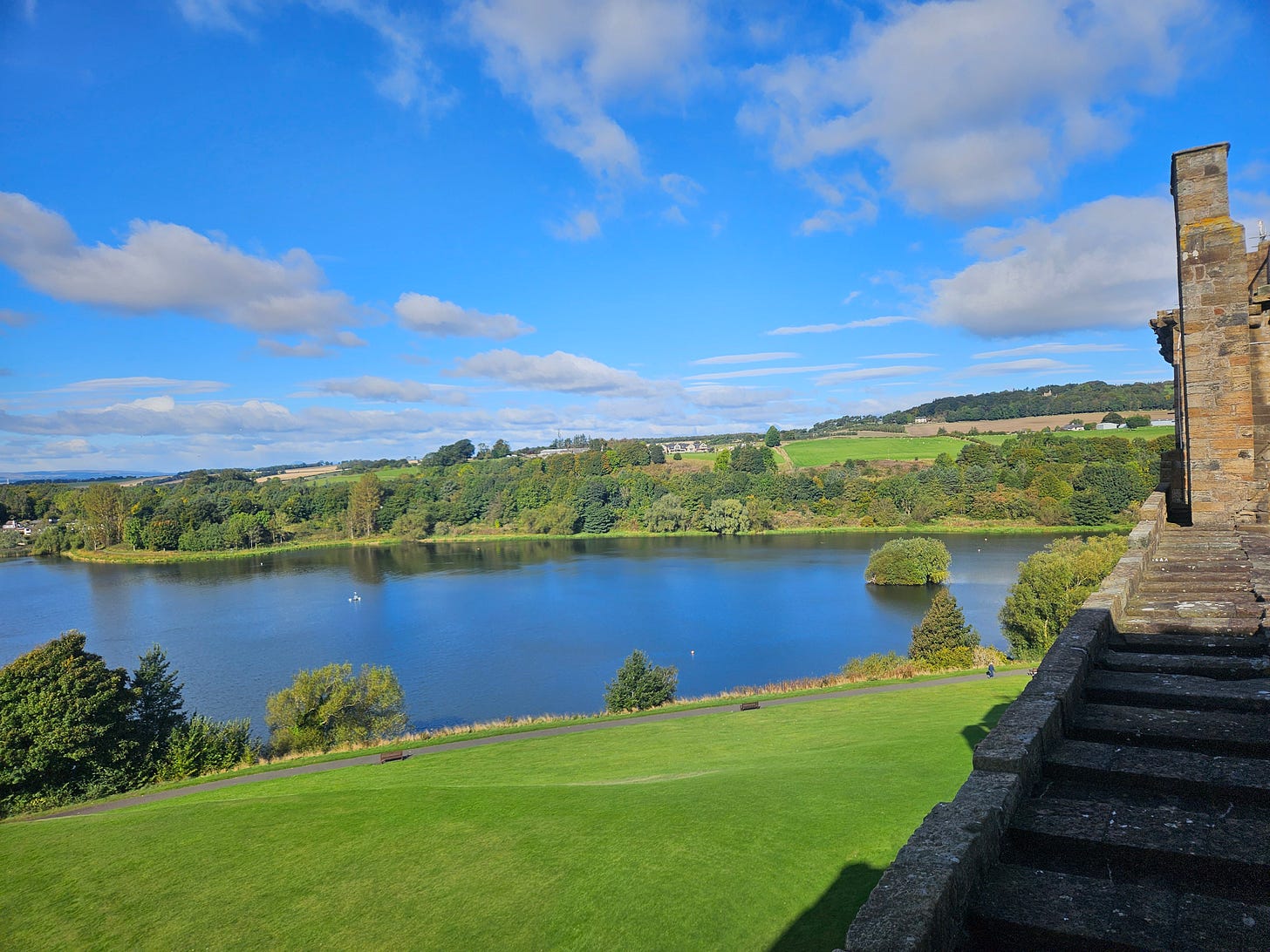
Where modern visitors might tread carefully and whisper in awe, they ran freely, laughing and exploring, unaware of the centuries of history beneath their feet. For them, the palace wasn’t a monument—it was home.
Listening to those stories, I began to understand that history isn’t always defined by kings and queens, battles, or grand events. Sometimes, it’s found in the small, everyday moments—like children climbing ancient walls, racing through shadowed corridors, and turning forgotten ruins into playgrounds. History also lives in the places where family stories take root and linger, passed down through generations.
Those memories opened my eyes to Linlithgow in a way I hadn’t expected. I wasn’t simply a visitor passing through; I was connected to my family’s past. During our visit, we took the time to explore two cemeteries—one older burial ground adjacent to the palace and a newer cemetery on the outskirts of the town’s center. Searching for the gravestones of our ancestors was a moving experience, turning our trip from simple sightseeing into a personal journey through time.
As I stood among the centuries-old headstones, the past felt incredibly close, bridging family history and the historic landscape. In that moment, Linlithgow transformed into a place I could truly imagine calling home.
Why Linlithgow Deserves a Day Trip from Edinburgh
If you’re visiting Scotland and based in Edinburgh, Linlithgow makes for an easy and rewarding day trip. It’s just a short train ride or drive away, with plenty to explore beyond the palace ruins. You can stroll the cobbled streets, enjoy the peaceful loch walks, and visit local cafés and shops that retain the town’s warm community spirit.
The town also celebrates its rich heritage with events like the annual Marches Day—a centuries-old festival featuring music, parades, and a strong sense of local pride. This ongoing connection between past and present gives Linlithgow a unique charm that’s well worth experiencing.
Tips for Visiting Linlithgow
If you’re planning a visit, here are a few tips:
Take your time: The palace and town are best savored slowly, with room to explore hidden corners and imagine the stories they hold.
Wear sturdy shoes: There’s plenty of ground to cover, including uneven stone paths and staircases.
Bring curiosity and imagination: The palace is full of history, but it comes alive when you let yourself step into the stories.
Start with the palace, but explore the town. St. Michael’s Church, the canal, the loch walk—all are worth your time.
Take the train. Linlithgow is just a short ride from Edinburgh or Glasgow, and the train station is a short walk from the palace.
Or, if you prefer, Viator offers a day trip from Edinburgh.
What Remains
Linlithgow Palace may be roofless and weathered, but it’s far from forgotten. Its stones have seen centuries of history—both national and personal. And while the royal court may never return, the stories do. In whispered memories, in family traditions, in games passed down through generations.
For me, the palace has become a kind of bridge—between past and present, between Scotland’s history and my own family’s narrative. It’s a place where memory lives in the walls and where each visit feels a little like coming home.
If you find yourself in Scotland with time for a day trip, put Linlithgow on your list. Wander the palace. Explore the cemeteries. Sit by the loch. Let the place speak to you.
Because Linlithgow isn’t just a just a chapter in Scotland’s story—it’s a place where stories are still being told.
PS.
This post has been a long time coming; I’ve been wondering how to frame it. My father-in-Law’s stories have been in the back of my mind for decades, quietly shaping my curiosity. My first visit to Linlithgow in 2014 with my daughter sparked a deeper interest in our family’s roots. But it wasn’t until we began planning our 2024 trip that the full extent of our heritage became clear. With help from a known cousin, some ancestry searches and a bit of digging through Google, we uncovered records tracing our Scottish and UK lineage back nearly 600 years.
Now in retirement, I’m excited to connect with our newly discovered relatives and continue exploring and sharing our rich Scottish history and heritage.
Who knows? Future residency may be in the cards!

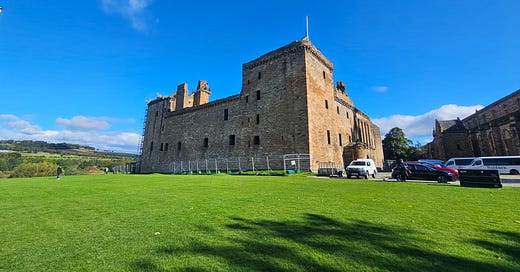



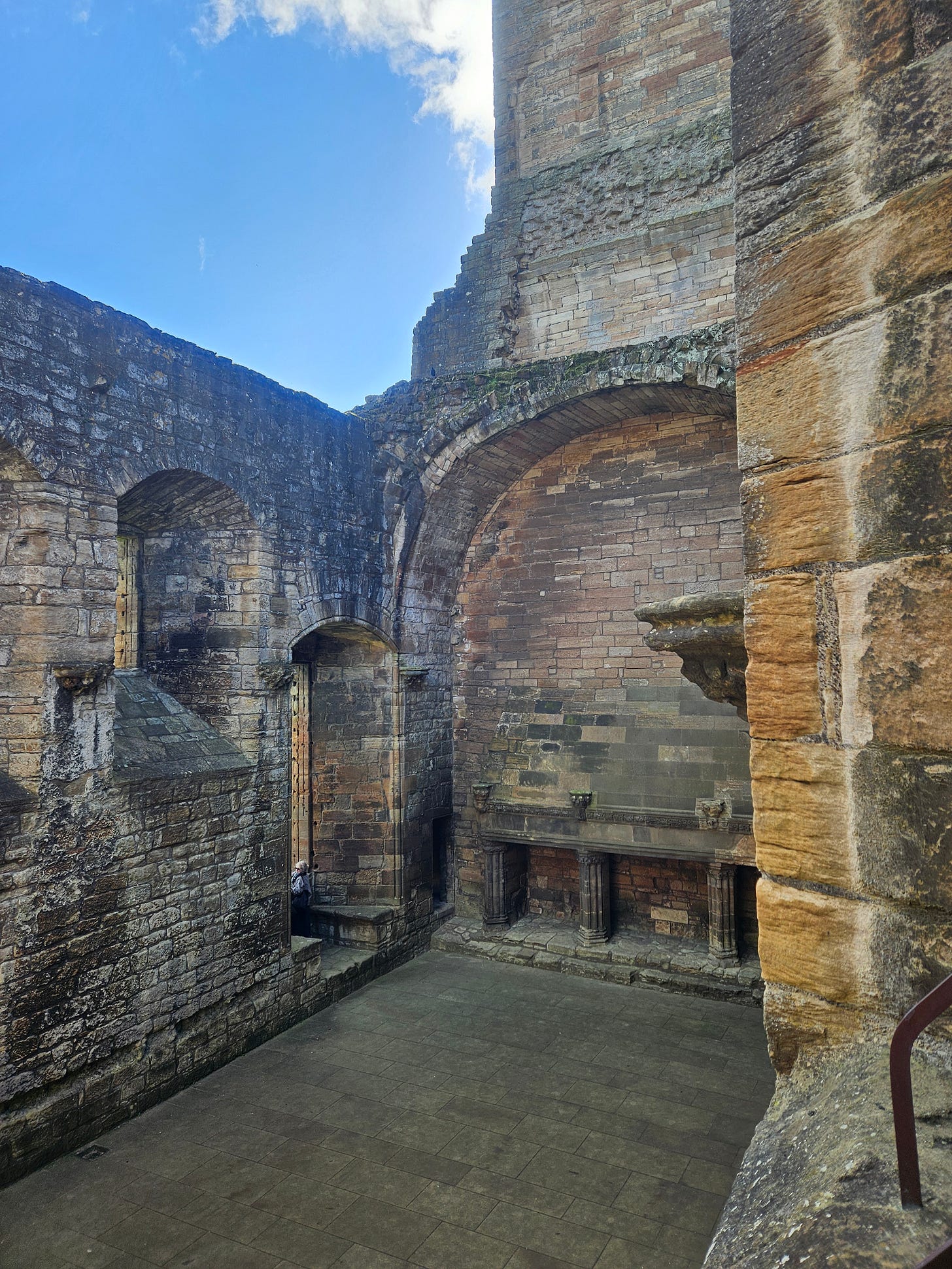
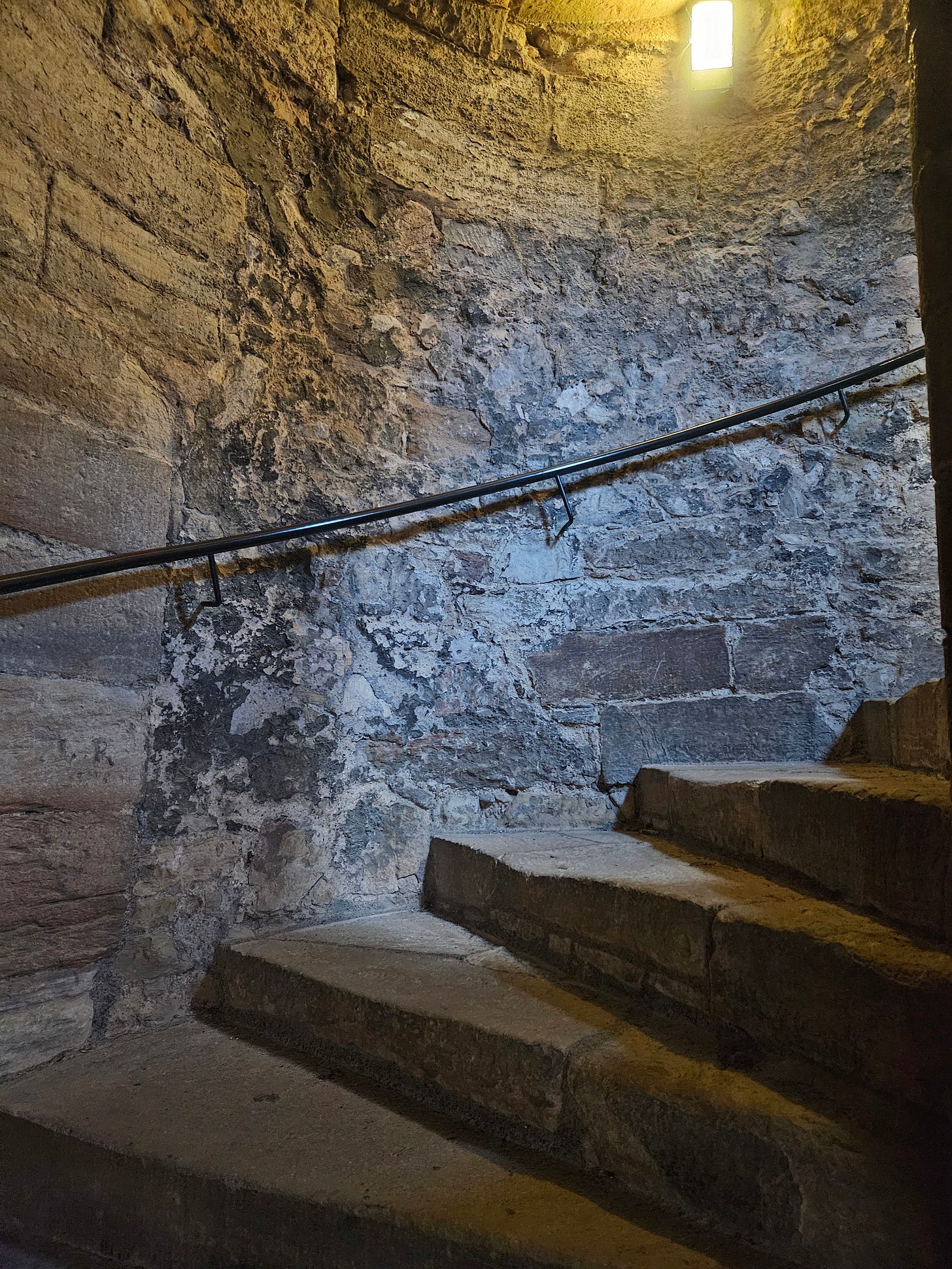
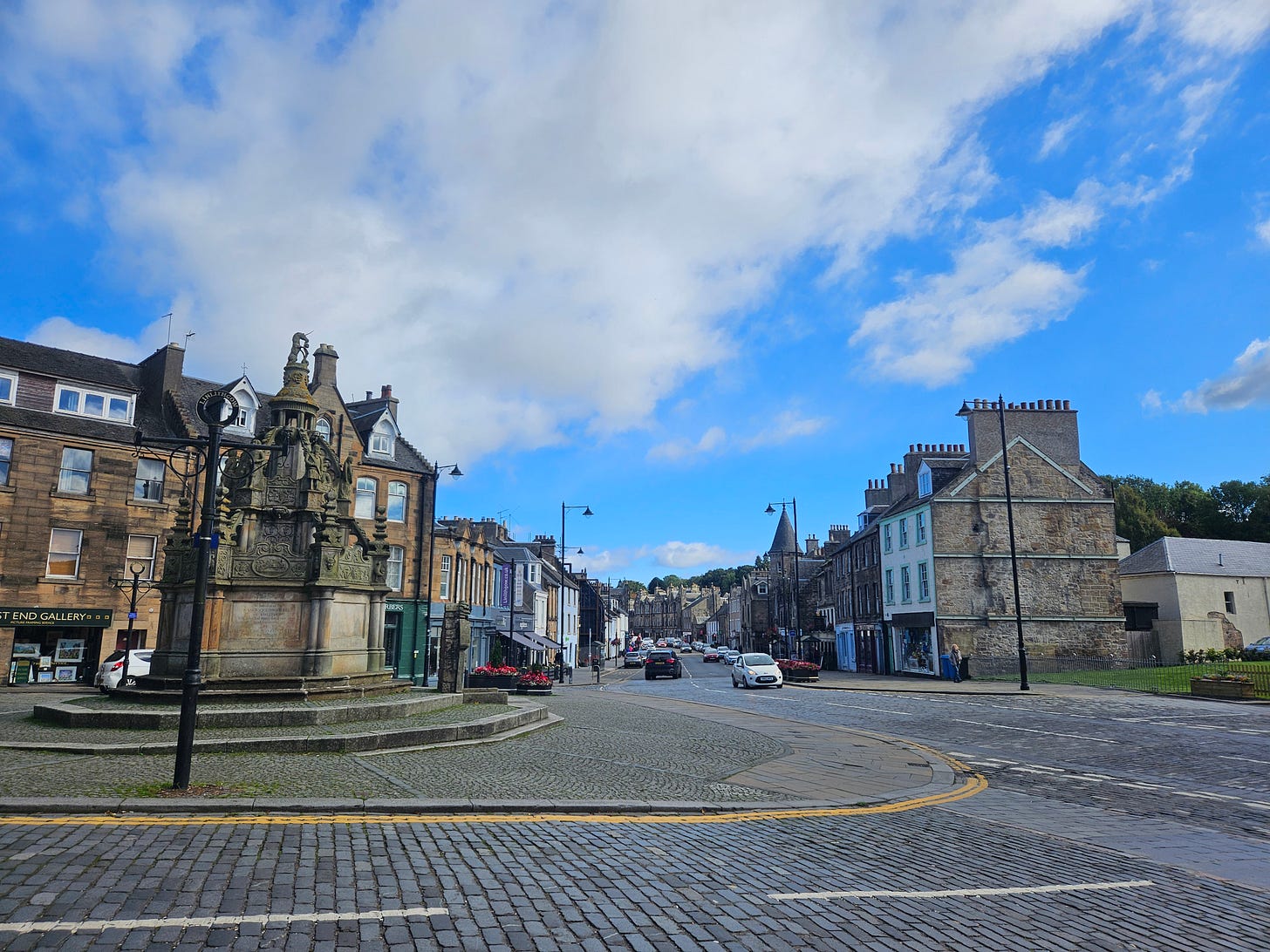

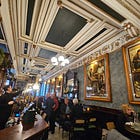


A beautiful place. I was lucky enough to live in a flat above the high street for a few months. The track around loch that goes by the castle was my running track 😜